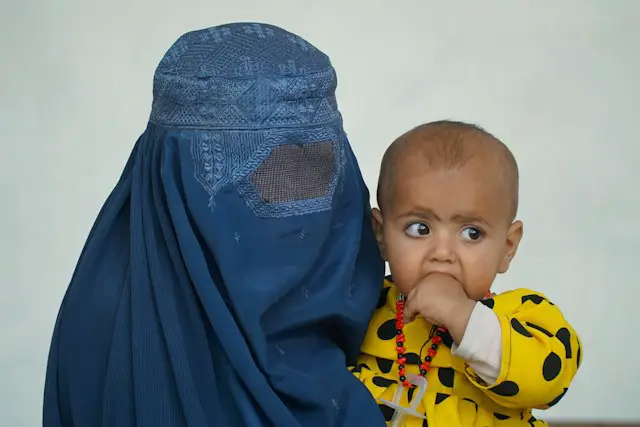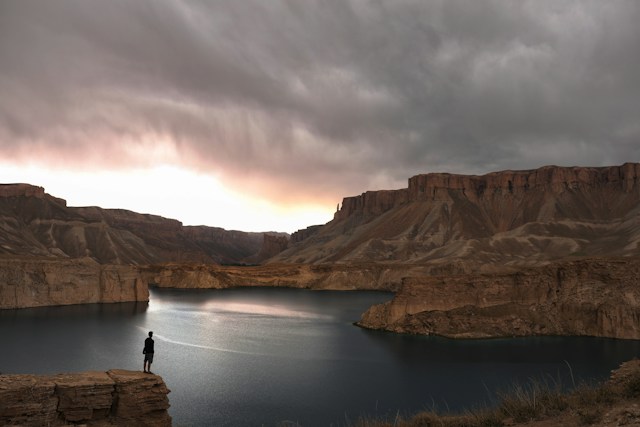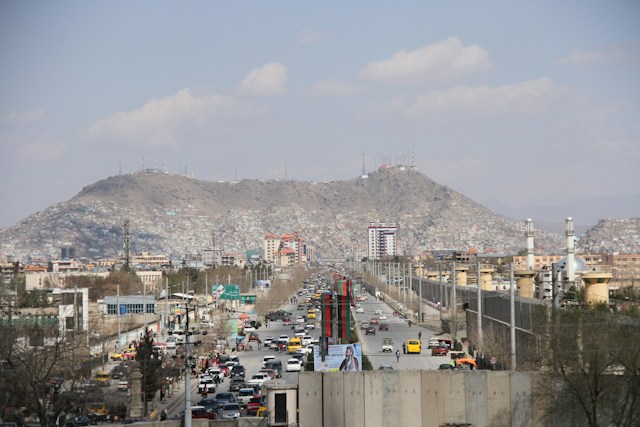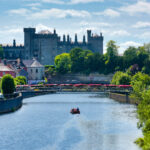Afghanistan, nestled in the heart of South Asia, is a country with a rich and diverse cultural tapestry that has evolved over centuries. The lifestyle of Afghanistan is deeply intertwined with its history, geography, and the resilience of its people. In this article, we will delve into the multifaceted aspects of Afghan lifestyle, exploring everything from traditional customs and dress to the impact of modernity on daily life.
Historical Context:
To understand the lifestyle of Afghanistan, one must delve into its historical roots. Afghanistan has been a crossroads of various civilizations, including the Persian, Greek, and Indian, shaping its unique cultural identity. The Afghan people take great pride in their history, and this is reflected in their everyday life.
Traditional Customs and Social Norms:
The lifestyle in Afghanistan is heavily influenced by traditional customs and social norms. Hospitality, a cornerstone of Afghan culture, is evident in the warmth with which guests are welcomed into homes. Sharing meals is a common practice, emphasizing the importance of community and connection.
Family holds a central role in Afghan society, and extended families often live together, fostering strong bonds between generations. Respect for elders is deeply ingrained, and decision-making within the family is typically a collective effort.

Dress and Fashion:
Afghanistan boasts a rich tapestry of traditional clothing, with attire varying across regions and ethnic groups. The attire reflects the cultural diversity of the country, with vibrant colors and intricate embroidery being common features. Traditional Afghan clothing is not only a form of expression but also a symbol of identity.
Men commonly wear long shirts and loose-fitting trousers, while women don colorful dresses often complemented by intricate headscarves. The attire is not only a reflection of cultural pride but also a testament to the resilience of traditions in the face of modernization.
Cuisine:
Afghan cuisine is a delightful blend of flavors, with each region contributing its unique dishes. Staple foods include rice, bread, and various meats, often seasoned with a medley of spices. Kabuli Pulao, a rice dish with meat, carrots, and raisins, is a national favorite.
Tea holds a special place in Afghan culture, and gatherings are often accompanied by the ritual of serving tea. The preparation and consumption of food play a significant role in social interactions, bringing people together in joyous celebrations and daily life.
Religious Practices:
Islam is the predominant religion in Afghanistan, and religious practices shape many aspects of daily life. The call to prayer is a familiar sound across cities and villages, signaling moments of reflection and connection with the divine. Fridays are reserved for congregational prayers at mosques, a practice that unites the community.
While religious observance is deeply ingrained, Afghanistan is home to a diversity of religious and ethnic groups, each contributing to the mosaic of traditions that make up the nation’s lifestyle.

Challenges and Resilience:
Afghanistan has faced its share of challenges, including conflict, political instability, and economic hardships. Despite these difficulties, the resilience of the Afghan people is evident in their commitment to preserving cultural traditions and maintaining a strong sense of community.
Modern Influences:
In recent decades, Afghanistan has witnessed the impact of globalization and modernization on its lifestyle. Urban centers have seen changes in clothing styles, educational opportunities, and entertainment choices. The younger generation, in particular, is navigating the delicate balance between preserving cultural heritage and embracing elements of a globalized world.
The lifestyle of Afghanistan is a testament to the country’s rich history, cultural diversity, and the resilience of its people. From traditional customs and dress to the influence of modernity, Afghanistan continues to evolve while holding steadfast to its roots. As the nation looks toward the future, it carries with it a deep appreciation for its heritage—a heritage that has shaped the unique and vibrant lifestyle of this South Asian gem.
Cultural Celebrations and Festivals:
Afghanistan is known for its vibrant and colorful celebrations, reflecting the diversity of its cultural heritage. One such festival is Nowruz, the Persian New Year, which marks the arrival of spring. Families gather to celebrate with special dishes, music, and traditional dances. Nowruz is a time for renewal, and the festivities extend to various regions, each adding its unique flair to the celebrations.
Eid al-Fitr and Eid al-Adha are significant Islamic festivals observed with great enthusiasm. Eid al-Fitr, marking the end of Ramadan, involves festive meals, gift-giving, and acts of charity. Eid al-Adha, the Feast of Sacrifice, commemorates the willingness of Ibrahim (Abraham) to sacrifice his son as an act of obedience to God. Families come together for prayers, feasts, and the ritual sacrifice of an animal, symbolizing generosity and sharing.
Music and Arts:
Afghanistan has a rich musical tradition, with various regional styles and instruments. The rubab, a lute-like instrument, and the tabla, a percussion instrument, are commonly used in traditional Afghan music. Attan, a traditional dance, is often performed during celebrations and special occasions, involving rhythmic movements and colorful costumes.
In the realm of visual arts, Afghanistan has a long history of exquisite craftsmanship. Intricate carpets, pottery, and calligraphy showcase the artistic talents passed down through generations. The country’s artistic heritage has faced challenges during times of conflict, but efforts are being made to preserve and revitalize these traditional art forms.
Education and Work:
Education plays a crucial role in shaping the lifestyle of Afghanistan. While access to education has improved in recent years, challenges persist, particularly in rural areas. Traditional gender roles have influenced educational opportunities for women, but there are ongoing efforts to promote gender equality in education.
The economic landscape of Afghanistan has been shaped by agriculture, trade, and, more recently, international aid. In urban areas, a variety of businesses and services contribute to the livelihoods of the population. The younger generation, in particular, is seeking educational and employment opportunities that align with global trends while staying connected to their cultural roots.
Challenges and Future Outlook:
It is essential to acknowledge the challenges that Afghanistan has faced, including decades of conflict, political instability, and economic struggles. These challenges have undoubtedly impacted the lifestyle of its people, but the resilience and determination to rebuild are evident.
The recent geopolitical developments and changes in leadership have brought about both hope and uncertainty for the future of Afghanistan. Efforts to promote stability, inclusivity, and economic development will play a crucial role in shaping the nation’s lifestyle in the years to come.
International collaborations and support are instrumental in addressing the pressing issues faced by Afghanistan. Initiatives focusing on education, healthcare, and sustainable development can contribute to a brighter future for the Afghan people, allowing them to preserve their cultural heritage while embracing positive changes.

The lifestyle of Afghanistan is a dynamic tapestry woven with threads of tradition, resilience, and cultural richness. From traditional customs and celebrations to the influence of modernity, Afghanistan’s people continue to navigate the complexities of their unique identity. As the nation strives for stability and development, the preservation of cultural heritage remains a vital aspect of shaping the Afghan lifestyle for generations to come.
Tourism and Heritage:
Despite its challenges, Afghanistan possesses a wealth of historical and natural wonders that have the potential to attract tourists. The country is home to UNESCO World Heritage Sites such as the Minaret and Archaeological Remains of Jam, a testament to its rich archaeological heritage. The ancient city of Herat, with its historic architecture, and the stunning landscapes of the Wakhan Corridor are among the many gems waiting to be explored.
Efforts to promote sustainable tourism can contribute not only to economic development but also to the preservation of cultural and natural assets. Initiatives aimed at showcasing Afghanistan’s cultural heritage can provide employment opportunities and foster a sense of pride among the local population.
Media and Communication:
In the digital age, media and communication play a significant role in shaping the lifestyle of Afghanistan. The rise of social media has allowed for greater connectivity and the exchange of ideas. Young Afghans use platforms like Facebook, Instagram, and Twitter to express themselves, share their stories, and connect with the global community.
Media outlets, both traditional and digital, contribute to the dissemination of information and cultural expressions. Afghan cinema, music, and literature are gaining recognition internationally, providing a platform for artists to showcase their talents and share their perspectives.
Challenges of Modernity:
While modern influences have brought opportunities and connectivity, they also pose challenges to traditional lifestyles. Rapid urbanization, changing social norms, and exposure to global trends can sometimes lead to a clash between tradition and modernity. Balancing the preservation of cultural identity with the desire for progress is an ongoing challenge for Afghan society.
Political and Security Dynamics:
The political landscape and security situation in Afghanistan have a profound impact on the lifestyle of its people. Periods of conflict and instability disrupt daily routines, displace communities, and hinder economic development. The quest for political stability is intertwined with the aspirations of the Afghan population for a peaceful and prosperous future.
International Assistance and Collaboration:
In the face of challenges, international assistance and collaboration play a crucial role in supporting Afghanistan’s development. Humanitarian aid, infrastructure projects, and educational initiatives contribute to improving the quality of life for many Afghans. Global partnerships focused on sustainable development and peace-building efforts are essential for creating an environment conducive to a flourishing lifestyle.
The lifestyle of Afghanistan is a complex and evolving tapestry that weaves together ancient traditions, modern influences, and the resilience of its people. From cultural celebrations and artistic expressions to the challenges posed by conflict and political dynamics, Afghanistan’s journey reflects the intricate interplay of history, heritage, and contemporary realities.
As the nation continues to navigate the path toward stability and development, it is essential to recognize and celebrate the diversity that defines Afghanistan’s lifestyle. Whether in the bustling markets of Kabul, the rural landscapes of Herat, or the historic sites scattered across the country, the Afghan people’s spirit and determination shine through, promising a future that honors its rich cultural legacy while embracing positive change.







